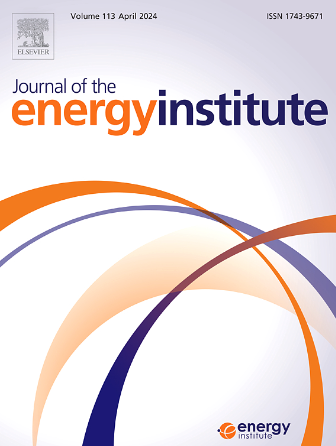Deactivation effect of different Pb salts over Fe/Zr-W catalyst for selective catalytic reduction of NO with NH3
IF 5.6
2区 工程技术
Q2 ENERGY & FUELS
引用次数: 0
Abstract
Deactivation on NH3-SCR catalyst surface by heavy metal species continues to hinder it long-term usage lifetime in flue gas treatment. A deeper insight into the poisoning effect of different Pb species on catalysts is crucial for designing denitrification catalysts with anti-Pb property. Herein, the obtained Fe/Zr-W catalyst was modified through multiple Pb salts (Pb(NO3)2, PbCl2, and PbSO4) to assess the different impact caused by various Pb species. The results showed that different Pb species led to varying levels of catalyst deactivation. Pb(NO3)2 and PbCl2 caused different degrees of deactivation in the Fe/Zr-W catalyst, associated with the decrease in redox cycling capacity, acidic sites, and surface adsorption oxygen. However, PbSO4 inversely enhanced the acidic site density of catalyst, which favored NH3 adsorption but significantly decreased the conversion selectivity in catalytic process. Possible deactivation pathway differentiation among Pb salts over Fe/Zr-W catalyst was established. This work revealed insights into the different poisoning pathway of various Pb salts, contributing to the development of denitration catalysts with enhanced Pb tolerance.

不同Pb盐对Fe/Zr-W催化剂NH3选择性催化还原NO的失活影响
重金属对NH3-SCR催化剂表面失活的影响持续影响其在烟气处理中的长期使用寿命。深入了解不同Pb对催化剂的中毒作用,对设计具有抗Pb性能的脱氮催化剂具有重要意义。本文通过多种Pb盐(Pb(NO3)2、PbCl2和PbSO4)对得到的Fe/Zr-W催化剂进行改性,评估不同Pb种类对催化剂性能的不同影响。结果表明,不同Pb种类导致不同程度的催化剂失活。Pb(NO3)2和PbCl2对Fe/Zr-W催化剂造成不同程度的失活,与氧化还原循环能力、酸性位点和表面吸附氧的降低有关。而PbSO4反而增强了催化剂的酸性位点密度,有利于NH3的吸附,但显著降低了催化过程中的转化选择性。建立了铅盐在Fe/Zr-W催化剂上可能的失活途径分化。该研究揭示了不同铅盐的不同中毒途径,有助于开发具有增强耐铅性的脱硝催化剂。
本文章由计算机程序翻译,如有差异,请以英文原文为准。
求助全文
约1分钟内获得全文
求助全文
来源期刊

Journal of The Energy Institute
工程技术-能源与燃料
CiteScore
10.60
自引率
5.30%
发文量
166
审稿时长
16 days
期刊介绍:
The Journal of the Energy Institute provides peer reviewed coverage of original high quality research on energy, engineering and technology.The coverage is broad and the main areas of interest include:
Combustion engineering and associated technologies; process heating; power generation; engines and propulsion; emissions and environmental pollution control; clean coal technologies; carbon abatement technologies
Emissions and environmental pollution control; safety and hazards;
Clean coal technologies; carbon abatement technologies, including carbon capture and storage, CCS;
Petroleum engineering and fuel quality, including storage and transport
Alternative energy sources; biomass utilisation and biomass conversion technologies; energy from waste, incineration and recycling
Energy conversion, energy recovery and energy efficiency; space heating, fuel cells, heat pumps and cooling systems
Energy storage
The journal''s coverage reflects changes in energy technology that result from the transition to more efficient energy production and end use together with reduced carbon emission.
 求助内容:
求助内容: 应助结果提醒方式:
应助结果提醒方式:


